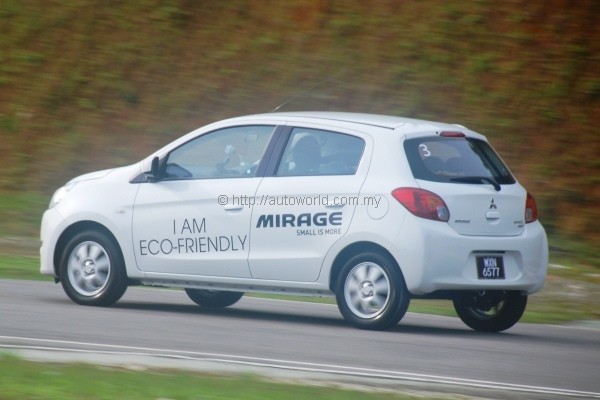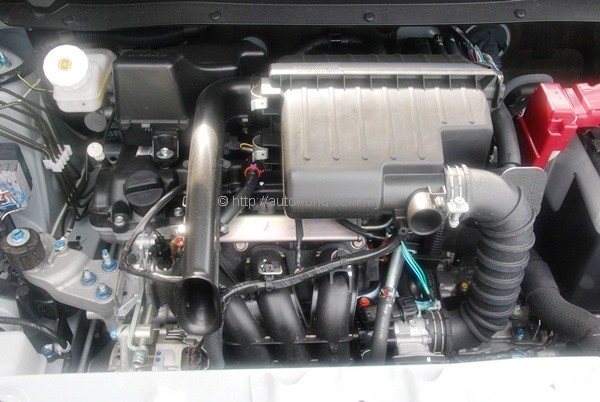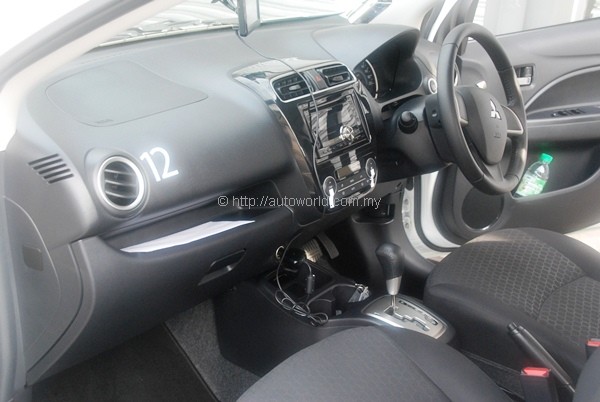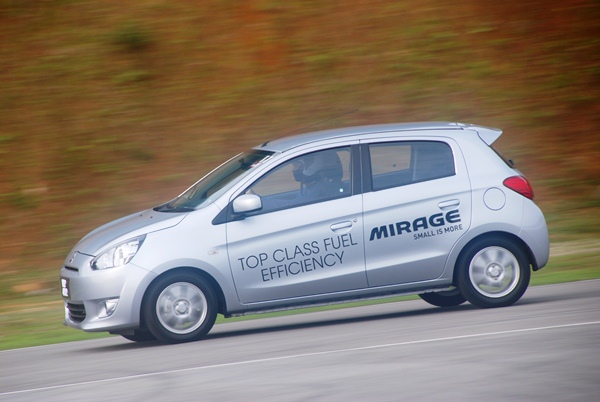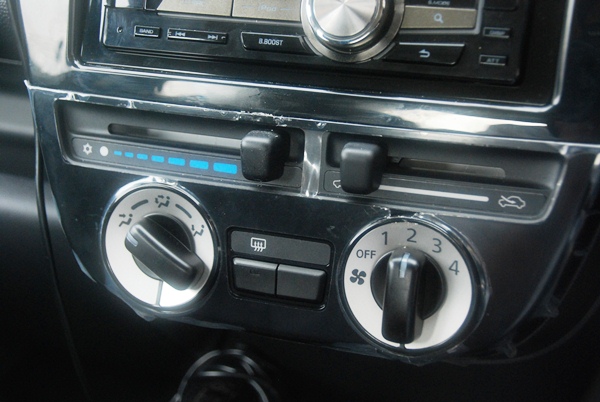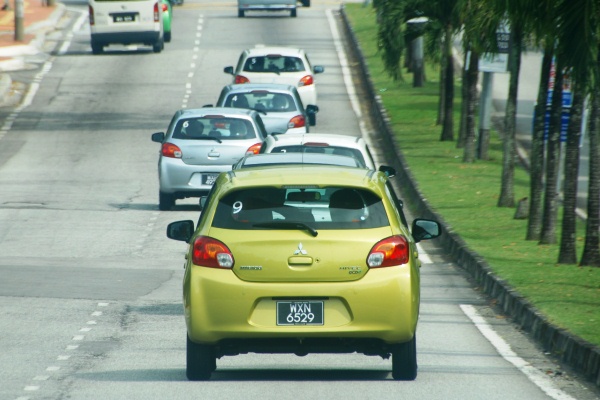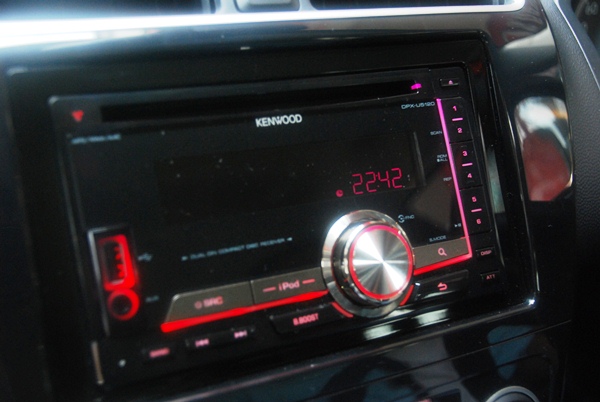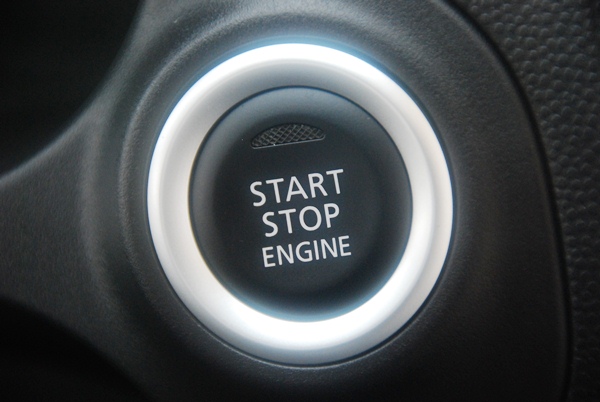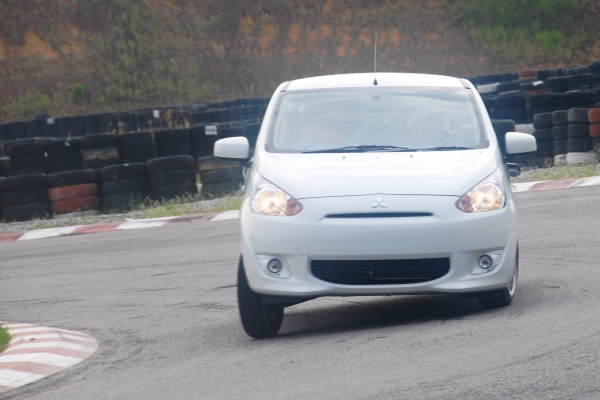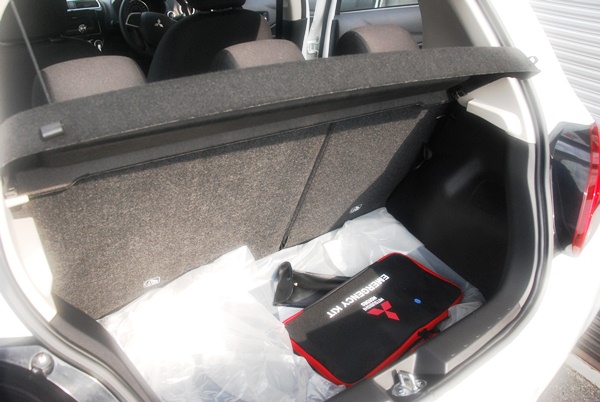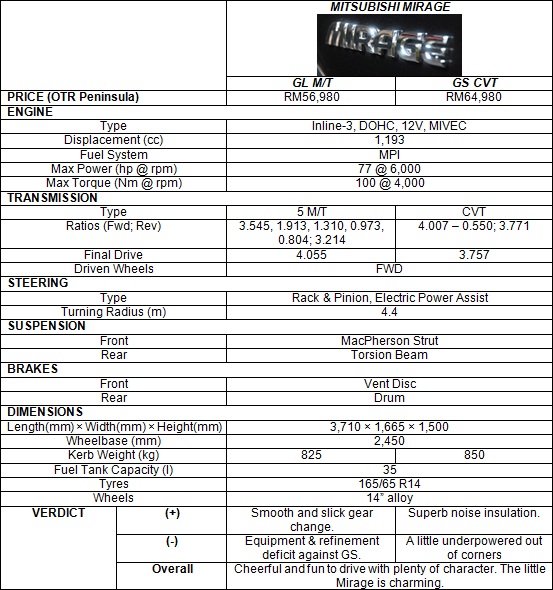Mitsubishi Mirage Test Drive Review
Car enthusiasts of a certain vintage will know of the Mitsubishi Mirage Cyborg which our Proton Satria is very closely related to. The new Mirage that we are reviewing here is a significantly different kettle of fish, but it does have a few tricks up its sleeve to deliver a driving experience that is surprisingly satisfying.
Not that excitement will be your first impression of the car when you lay eyes onto it. Mitsubishi’s marketing speak for the car has focused overwhelmingly on efficiency, and shod in those narrow 165-secion Bridgestone Ecopia tyres, the Mirage’s posture doesn’t exactly arouse the senses if you know what we mean.
Earlier this week, we met up with our friends from a few other publications on a media drive outing to put the Mirage through its paces. Our two-day drive programme of the Mirage took us to Malacca via the trunk roads and then back to the Klang Valley the next day. We even had a couple of laps each driving the Mirage in the MIMC go-kart track, and for good measure, Mitsubishi even sent in its Dakar rally hero Hiroshi Masuoka to push the Mirage right to its limits, in the confines of the track of course.
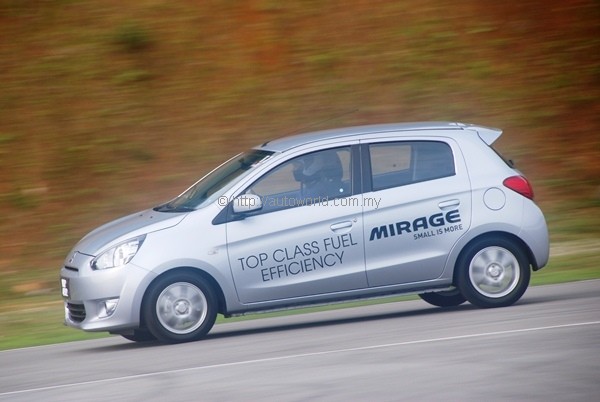 |
| The Mirage had better than average road manners. We were impressed. |
How much car for the money?
The Mirage is not a big car by any means. Dimensionally, its 3,710mm by 1,665mm footprint puts it in middle ground above the Perodua Viva and Suzuki Alto, but below the Perodua Myvi and Suzuki Swift. It stretches longer than a Hyundai i10 both from stem to stern and flank-to-flank, but avoiding comparisons with the Ford Fiesta and Mazda2 would be wise.
Over at the scales, the Mirage weighs in at 825kg in its manual guise with the optional CVT adding a further 25kg. Against smaller cars, only the Viva is lighter, with the Alto and i10 both quoted with kerb weights exceeding 900kg. These figures tally with Mitsubishi’s claims that the Mirage is some seven percent lighter than an average car in its class, a figure which the company derived by calculating against the previous-generation Colt.
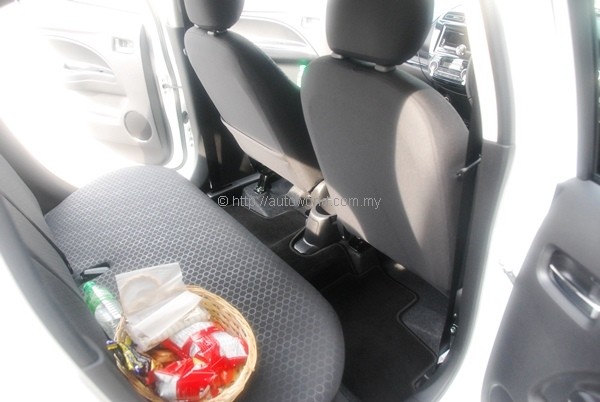 |
| Rear accommodation is as good as it gets for a car this size. |
Only one engine is available to shift the Mirage’s pint-sized frame, and it is the all-aluminium 1.2-litre three-cylinder 3A92 MIVEC engine producing 77hp @ 6,000rpm and 100Nm @ 4,000rpm. In the entry-level GL spec, consumers have the choice of pairing the engine with a five-speed manual or CVT, whilst the range-topping GS model is CVT only.
Prices start at RM56,980 with insurance for the manual, going up to RM61,980 for the GL CVT, and finally to RM64,980 for the GS CVT. Based on Mitsubishi’s latest figures, 90% of its clientele has forked out the extra money for the GS model, which is sound judgment in our opinion. Although the GL model is decently specced enough for its price, the addition of front fog lamps and keyless entry alone already adequately justifies the extra outlay of RM3,000 for the GS.
The difference in equipment between the two trim levels are actually minimal, and those with a chronic preference for manual transmission will certainly not feel shortchanged with what the GL has to offer – ABS, EBD, ISOFIX, dual airbags, all-round power windows, electric side mirrors, and headlamp level adjust. But for the majority of Malaysian buyers who would prefer two-pedal motoring, the GS makes a stronger case.
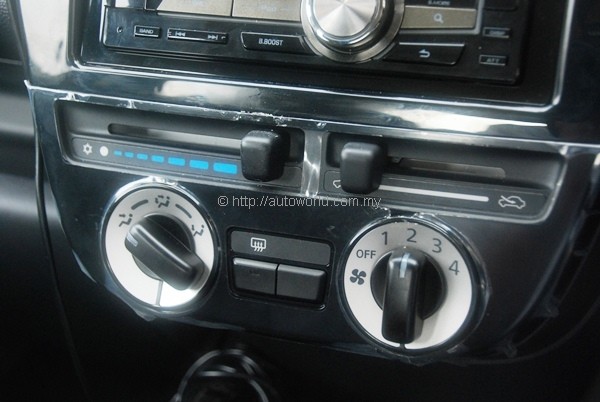 |
| Manual climate control for the GL. GS gets auto climate control. |
Driving Impressions
Mitsubishi knows a thing or two about handling, and the Mirage is surprisingly competent on this front. But before we explore that topic in depth, let’s get the fuel efficiency questions out of the way. A challenge held during the Petaling Jaya-Port Dickson leg of the media drive yielded figures between 23.0 and 30.0 km/l over a total distance of 135km. These are of course figures produced under deliberate attempt, and realistically, we are looking at figures from 15 to 20 km/l for average day-to-day driving. I apologize that we didn’t have time to empty the tank for a more accurate reading.
In the varying conditions of our media drive, the Mirage demonstrated a number of very admirable traits, some of them totally expected, others not. The Mirage’s agility in tight spaces is impressive, but unsurprising, considering its diminutive size and weight. The body rolls significantly under hard cornering to be sure, but the chassis is amazingly capable in summoning all available grip from the tyres to gamely resist but without totally eliminating understeer. Personally, I would consider thicker anti-roll bars and slightly wider tyres for better overall stability, but the basic chassis setup is pretty well balanced and competent.
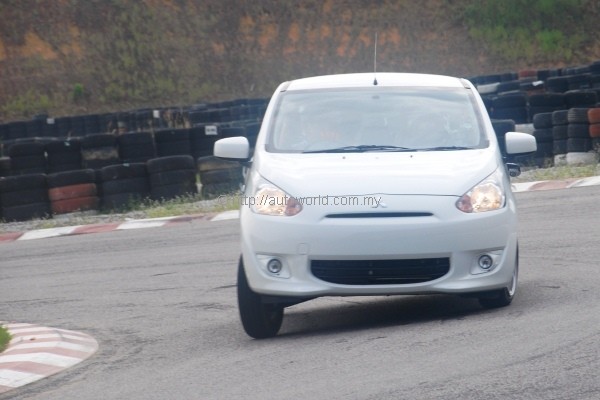 |
| The Mirage rolls quite a bit in corners, but chassis is able to summon a fair bit of grip. |
Where the Mirage truly exceeded expectations was its behaviour on the highway. We maxed out the CVT version at 170kph and in the manual, we were able to sustain 160kph without too much effort. Its lightweight and narrow tyres mean that crosswinds can be felt, but overall stability and composure of the chassis is excellent, and the sound deadening package is surprisingly good, although we must report that the GL M/T and GS CVT test cars seem to have different levels of sound insulation – the latter being superior by notable margins. In the GL model, wind noise is prominent, but not at levels that would hinder conversation.
The engine, being an all-aluminium unit, produces a less than pleasant tinny noise right at the top end, but for the most part, it revs willingly, and in the manual version especially, sustaining engine speeds of 4,000rpm over a prolonged distance proved relatively effortless. At low and mid revs, the engine is reasonably quiet and refined for a three-cylinder unit. This being a small-capacity naturally aspirated engine, low end torque is naturally not in abundance. Although the engine is quite capable of sustaining high speeds, getting there requires coaxing, and overtaking on two-way trunk roads requires careful planning.
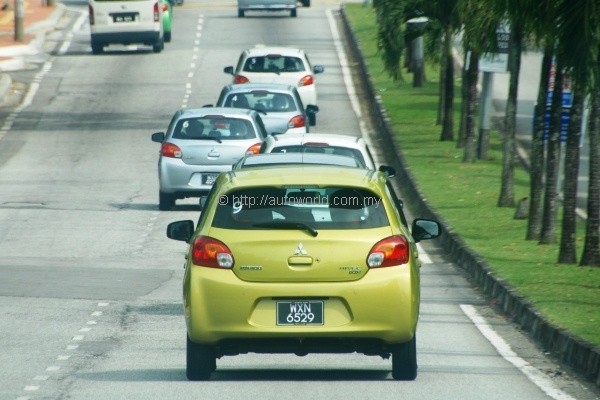 |
| The nimble and agile Mirage is the perfect foil for congested urban traffic. |
Verdict
Between the three variants on offer, the top spec GS CVT variant is the pick of the range, but if you don’t mind driving stick shift, we suggest taking a punt with the GL manual which is livelier and more fun to drive. The GL CVT model is decent on its own, but it suffers from middle child syndrome in terms of its pricing and kit count relative to the GS which is only marginally more expensive but offered with useful equipment upgrades.
Although not quite as sporty as previous cars that have worn this badge, the Mirage is a charming little car that is both economical and bags of fun to drive. It is a car that we highly recommend if outright space is not your top priority. Simple, without fuss, yet able to entertain; cheap, in the Mirage’s case, has turned out to be very cheerful indeed.
 |





